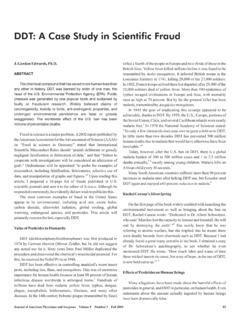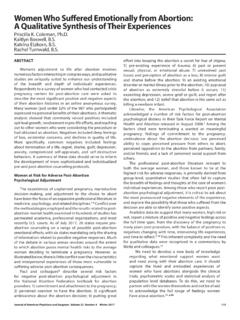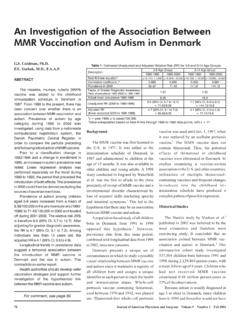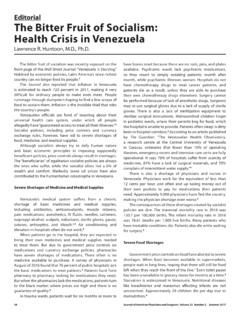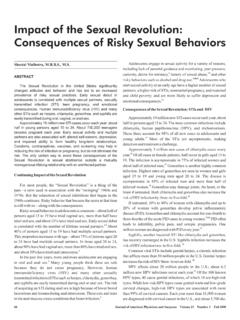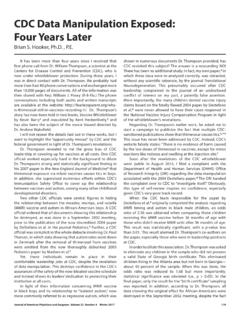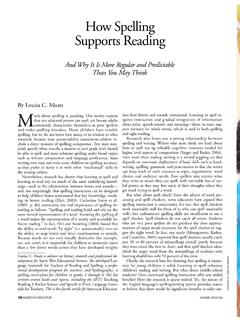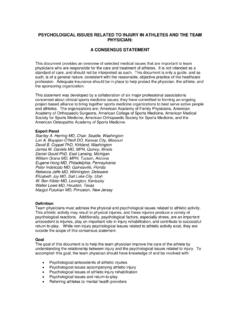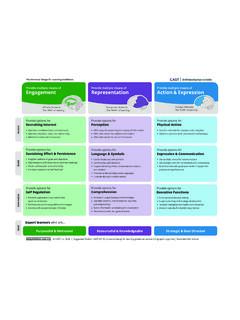Transcription of The ‘Science’ of Eugenics: America’s Moral Detour
1 When most people think of eugenics, they think of the unspeakable acts of Adolf Hitler and Dr. Josef Mengele. But history tells us that some of America s best and brightest promoted eugenics as settled science and necessary for the preservation of society. Within 100 years, our deep thinkers went from declaring that in our new country all men are created equal to espousing the idea that some animals men are more equal than others. 1 Eugenics was popularized in the in the United States in the 1890s. High school and college textbooks from the 1920s through the 1940s often had chapters touting the scientific progress to be made from applying eugenic principles to the population.
2 Many early scientific journals focusing on heredity in plants and lower organisms were published by eugenicists and included scientific articles on human eugenics-promoting studies of eugenics fell out of favor after World War II, most references to eugenics were removed from textbooks and subsequent editions of relevant journals. We cannot erase history. To do so would allow it to repeat of EugenicsEugenics is a science that deals with the improvement (as by control of human mating) of hereditary qualities of a race or The word is derived from the Greek word eu (good or well) and the suffix -genes (born). Eugenics is sometimes broadly applied to describe any human action whose goal is to improve the gene pool.
3 Negative eugenics is aimed at discouraging reproduction among those with hereditary traits perceived as poor, the so-called unfit or genetically disadvantaged. This ranges from benign family planning to forced sterilization and genocide. Positive eugenics is aimed at encouraging reproduction among those who are healthy, intelligent, and of high Moral character the genetically advantaged. Of course, an obvious problem is who defines which traits are Roots of EugenicsMan s quest for a perfect society is well documented. In The Republic, Plato (c. 400 ) set forth his attempt to mathematically analyze genetic inheritance. He theorized that human reproduction should be monitored and controlled by the state to improve the human race.
4 He was enough of a scientist to know that gold soul persons could still produce bronze soul He was intuitive enough to know that the public would not accept this type of government was the norm throughout ancient Athens and Sparta. In Sparta, the city elders inspected the newborns to ensure that only the strong survived, and the weak were left to die. The Fourth Table of the Twelve Tables of Roman Law (c. 450 ) stated that deformed children would be put to Ancient Judaism and Christianity, and by the 4th century European law, religion, and medicine rejected the intentional killing of an OriginsA highly regarded statistician, Sir Francis Galton of Great Britain, founded the modern science of eugenics.
5 He developed the concept of chi square, regression, and correlation. Additionally, Galton discovered that fingerprints were unique in each person and that there is a genetic difference between fraternal (dizygotic) and identical (monozygotic) on Charles Darwin s work, in an 1865 article Hereditary Talent and Character, 5 Galton examined lineages and biographical information of leading English families. He concluded that if talented men were mated with talented women, of the same mental and physical characters as themselves, generation after generation, the offspring would be highly bred with no more tendency to revert to their mongrel antecedents, just like selectively bred foxhounds and race horses.
6 By 1883, he coined the term eugenics for this new science of selective breeding that would forever change , p 18 While Galton believed in facilitating and even legally mandating biologically conducive marriages, he did not believe regulated marriages were realistic in a democratic Eugenics in the United StatesGordon Lincecum, a well-known Texas biologist and physician, could be considered America s first In 1849 he proposed a bill in Wisconsin mandating sterilization of the mentally handicapped and others whose traits he deemed undesirable. The legislation was never sponsored or brought up for a fueled early interest in eugenics.
7 After the Civil War ended in 1865, there was increasing immigration of Asians and Eastern and Southern Europeans. The Immigration Restriction League, founded in 1894 by three Harvard graduates, was the first American entity associated officially with eugenics. The League wanted to bar what it considered inferior races from entering America and diluting what it saw as the superior American racial with Connecticut in 1896, many states enacted marriage laws with eugenic criteria, prohibiting anyone who was epileptic, imbecile or feeble-minded from , p 45 In 1897 Michigan s state legislature became the first in the country to pass a forced sterilization law, but the governor vetoed the bill.
8 122 Journal of American Physicians and Surgeons Volume 19 Number 4 Winter 2014 The Science of Eugenics: America sMoral DetourMarilyn M. Singleton, , the late 1890s, the renowned surgeon Albert Ochsner learned to perform vasectomies. He spoke at American Medical Association meetings not only recommending vasectomy for criminals but touting its benefits for chronic inebriates, imbeciles, perverts, and paupers. 9 American Eugenics as Science Charles Davenport, a chicken breeder, agriculturalist, prominent biologist, and Harvard professor, launched the American eugenics movement in 1898. His expertise in science gave eugenics its needed respectability.
9 He was one of the first American scientists to apply Mendelian genetics to human traits, discovering the inheritance of conditions such as albinism and neurofibromatosis. Davenport believed that complex human traits were controlled by single genes and therefore inherited in a predictable pattern. Davenport moved on from heredity to eugenics. Relying on his single-gene theory, he posited that the human population could be improved by selecting and breeding for desirable traits, just as practiced with livestock. Stanford president and biologist David Starr Jordan in 1902 originated the notion of race and blood in Blood of a Nation, A Study of the Decay of Races by the Survival of the He scientifically concluded that human qualities and conditions such as talent and poverty were passed through the blood.
10 Jordan went on to chair the Committee on Eugenics of the Immigration Restriction League in American Breeder s Association (now called the American Genetic Association) was established in 1903 to disseminate the latest knowledge on how to plant and harvest more robust strains of corn and other produce. Membership included Alexander Graham Bell, David Starr Jordan, and Luther Burbank. In 1906, Davenport urged the Association to include a eugenics section to investigate heredity in the human race with the goal of breeding humans with superior 1910 Davenport, with the American Breeders Association, founded the Eugenics Record Office (ERO) based at Cold Spring Harbor Laboratory on Long Island, New York.
